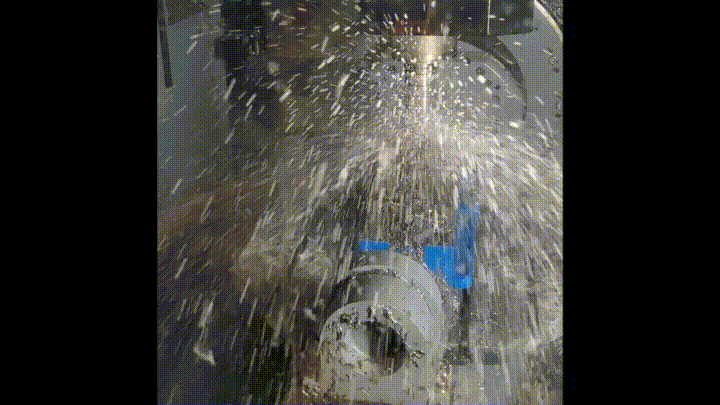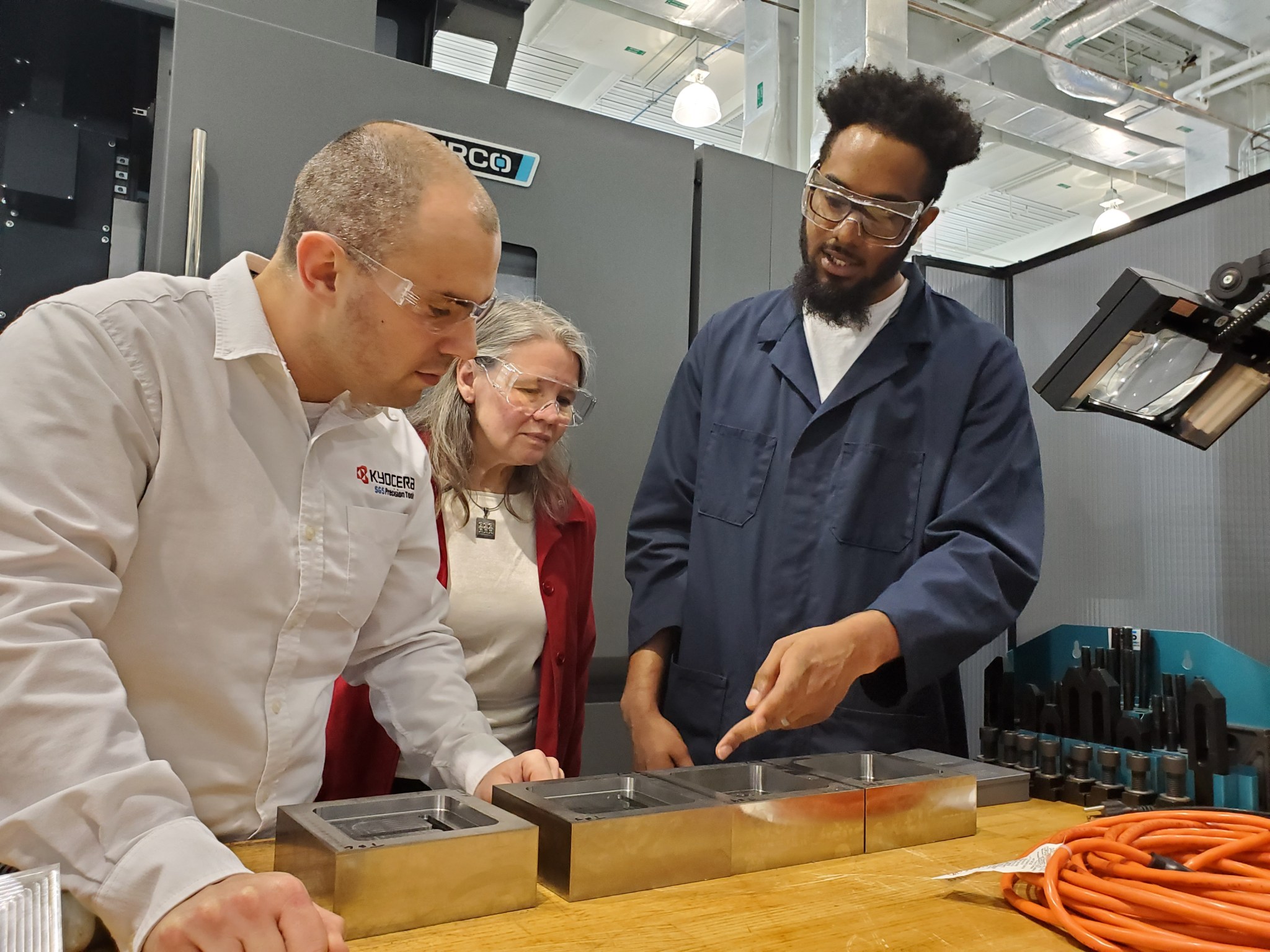The saying ‘measure twice, cut once’ takes on a whole new meaning when talking about a 300-pound metal plate being machined down to a 35-pound spacesuit part.
Researchers and technicians at NASA’s Langley Research Center in Hampton, Virginia are working on the intricately machined and welded backplate of the new Portable Life Support System (PLSS) for the Exploration Extravehicular Mobility Unit (xEMU) spacesuit, led by NASA’s Johnson Space Center.
The backplate starts as one large piece of titanium. After the plate is sized down, a milling machine will be used to cut the cooling channels into the titanium, then cover plates will be welded on using Langley’s electron beam welding equipment and innovative techniques. Finally, the parts will be thoroughly inspected before being delivered. The backplate serves as the “motherboard” of the xEMU life support system, with all of the equipment required to keep an astronaut alive during a spacewalk mounted to the plate which is attached to the back of the spacesuit.
“We’ll be drawing on the center’s welding and non-destructive evaluation expertise and the machining will be done in-house which offers lower risk,” said Karen Taminger, materials researcher and project lead at Langley. “However, we’re looking at 1/2,000 of an inch precision.”
That means needing the right tools. For additional expertise on the specialized tools needed to machine titanium so precisely, Langley partnered with Virginia’s Commonwealth Center for Advanced Manufacturing (CCAM).
“CCAM partners have a lot of experience with titanium and could respond quickly and efficiently to help develop tools needed for extreme precision,” Taminger said.
One of the CCAM partners, Kyocera, offered custom tooling and manufacturing understanding for the precision needed on the angles of the backplate channel cuts. Using the best tools under the right parameters is important, dull tools can lead to debris or loss of precision in the geometry of the cuts.
“We’ve developed tools using the highest quality standards but working on something mission-critical has made us look at it a different way,” said Jason Wells, president of Kyocera SGS Tech Hub. “All it takes is one little piece to impact the larger puzzle.”
Using the knowledge gained through the partnership with CCAM, technicians will machine the plates down, cut the cooling channels in and weld the covers. Welding with the right amount of power and completing the welds in the right order is just as delicate an operation as cutting the cooling channels.
“Using 4 kilowatts of power to weld these joints is like drawing with a big fat crayon versus 1.5 kw which is more like a fine point pencil. Also, the order of the welds impacts the spread of the heat, like tightening lug nuts on a wheel,” Taminger said. “Once the welds are done, the passages are sealed off and you need confidence that the cuts are the right shape, so the water in the channels is flowing at the right rate to cool the backplate.”
A thorough non-destructive evaluation will be done with high-resolution scans of the cooling channels and welds to make sure the welds are precise. There will also be a thermal analysis of the parts and detailed metallography, or study of the physical structure and properties of the metal, to verify the welds will do the job.
“We’re going to look at all of the areas that could cause problems and we’re putting extra analysis in those areas,” Taminger said. “It’s humbling. The astronauts are putting their lives in our hands, so we need to make sure it’s exactly what they need. We need to make sure it’s perfect.”



























